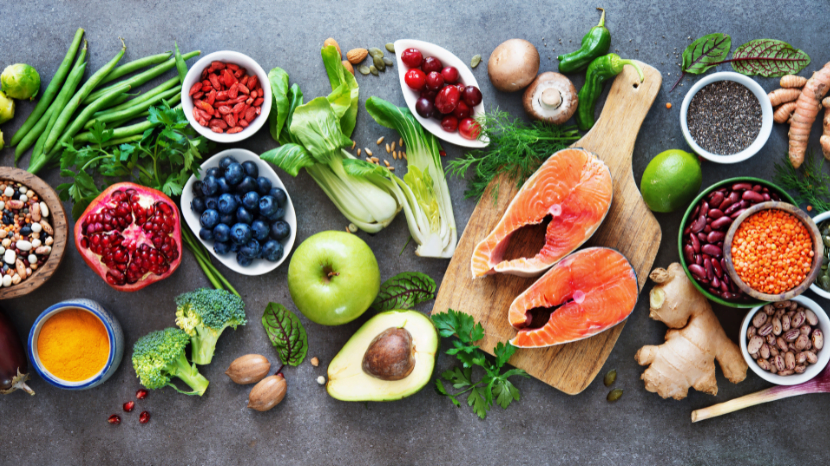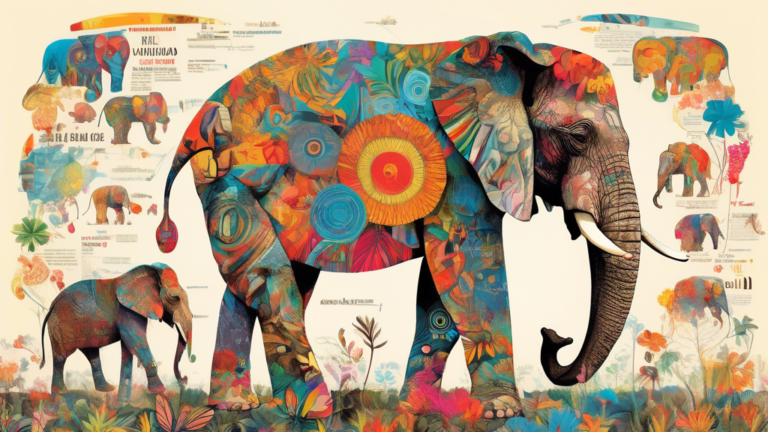100 Facts About Food
In this article, we will delve into 100 facts about food that will surprise, amuse, and perhaps even educate you a little. Let’s get started!
Fact 1: The Fear of Vegetables
Believe it or not, there is a phobia called Lachanophobia, which is the fear of vegetables. Some individuals experience this unusual phobia, avoiding vegetables at all costs. It is often triggered by negative experiences with vegetables during childhood.
Fact 2: Honey Never Spoils
Honey is a natural preservative and has an indefinite shelf life. Archaeologists have found pots of honey in ancient Egyptian tombs that are over 3,000 years old and still perfectly edible. Its low moisture content and acidic pH create a hostile environment for bacteria and microorganisms.
Fact 3: Bananas are Berries, But Strawberries Aren’t
In botanical terms, a berry is a fruit produced from the ovary of a single flower with seeds embedded in the flesh. Surprisingly, bananas qualify as berries, while strawberries do not, as they grow from a flower with multiple ovaries.
Fact 4: The Most Expensive Coffee
The world’s most expensive coffee, Kopi Luwak, involves a unique process where civets eat the coffee cherries, and the beans are harvested from their feces. This method imparts a distinctive flavor to the coffee, but it’s also a subject of ethical concerns due to the potential for animal exploitation.
Fact 5: Pineapples Take Two Years to Grow
Pineapples are not a quick crop; they take about two years to reach maturation. This long growth period contributes to the cost of this delicious, tropical fruit. Each pineapple plant only produces one pineapple at a time.
Fact 6: The Spice Trade
The spice trade was a significant driver of the world economy from the 16th to the 18th centuries. Spices like black pepper were so valuable that they were often used as currency. This trade route connected the East and West, fostering cultural exchanges and global economic development.
Fact 7: Chocolate Was Once Used as Currency
In the ancient Mayan and Aztec civilizations, cacao beans were so valuable that they were used as a form of currency. Chocolate, in its early forms, was reserved for the elite and used in sacred ceremonies.
Fact 8: The Miracle Fruit
Synsepalum dulcificum, also known as the miracle fruit, has the remarkable ability to make sour foods taste sweet. This is due to a protein called miraculin found in the fruit, which binds to the taste receptors on the tongue, altering the perception of sour and bitter flavors.
Fact 9: The Hottest Chili Pepper
The Carolina Reaper holds the Guinness World Record for the hottest chili pepper. Consuming this fiery pepper can be a painful experience, with effects including sweating, vomiting, and intense burning sensations. It’s not for the faint of heart!
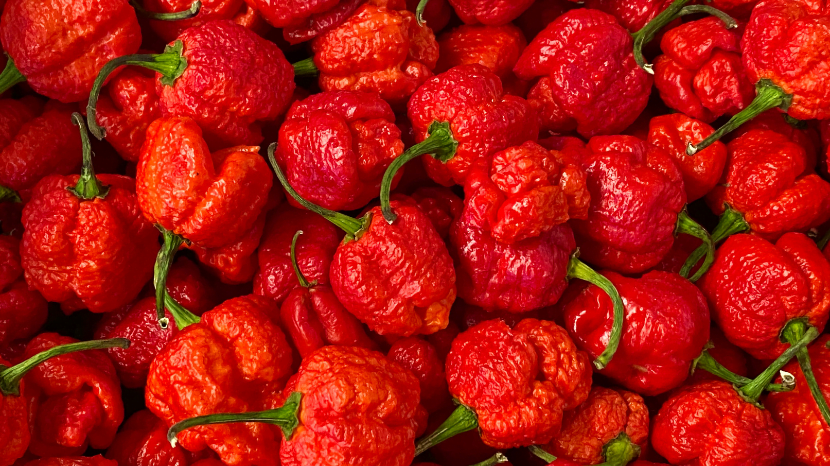
Fact 10: The World’s Largest Collection of Chopsticks
The world’s largest collection of chopsticks is owned by a Japanese man named Hirotoshi Ito. His collection consists of over 1,700 pairs of chopsticks from various countries, showcasing the diversity and artistry that goes into crafting this ubiquitous utensil used in many Asian cuisines.
Fact 11: The World’s Rarest Pasta
Su filindeu, which translates to “the threads of God,” is the world’s rarest pasta. This Sardinian delicacy is handcrafted using a centuries-old technique, and only a few people in the world know how to make it, making it a sought-after culinary treasure.
Fact 12: The Wasabi Deception
Most of the wasabi served in restaurants is not real wasabi but a mixture of horseradish, mustard, and food coloring. Genuine wasabi is quite expensive and perishable, making it a rare find in the culinary world.
Fact 13: The Pungent Durian
Durian, known as the “king of fruits,” is famous for its strong, pungent smell, which people either love or can’t stand. This fruit is so smelly that it’s banned in many public places in Southeast Asia, including hotels and public transportation.
Fact 14: The Color-Changing Tea
Butterfly pea flower tea is a naturally blue tea made from the petals of the Clitoria ternatea plant. This vibrant tea has a unique property: it changes color based on the pH level of substances added to it, turning purple with lemon juice and pink with hibiscus.
Fact 15: The World’s Most Expensive Spice
Saffron, derived from the flower of Crocus sativus, is the world’s most expensive spice by weight. It takes approximately 75,000 saffron blossoms to produce a single pound of saffron spice, contributing to its high price.
Fact 16: The Many Varieties of Apples
There are over 7,500 varieties of apples grown worldwide. If you were to try a new variety each day, it would take you over 20 years to taste them all. Apples come in a range of flavors, from sweet to tart, and colors, including red, green, and yellow.
Fact 17: The Nutty Fact About Almonds
Almonds are not true nuts; they are seeds of the fruit of the almond tree. The tree produces fruits with a hard outer shell and a seed inside, which is the edible part we know as the almond.
Fact 18: The Healing Properties of Manuka Honey
Manuka honey, produced by bees that pollinate the Manuka bush in New Zealand, is renowned for its healing properties. This honey contains a higher concentration of methylglyoxal, a compound with antibacterial properties, making it a sought-after remedy for various ailments.
Fact 19: The World’s Oldest Recipe
The world’s oldest known recipe is for beer, dating back to ancient Mesopotamia around 3400 BCE. This recipe, inscribed on a clay tablet, outlines the brewing process, indicating that beer was a popular beverage in ancient civilizations.
Fact 20: The Invention of Ice Cream
The origins of ice cream can be traced back to ancient China, where emperors enjoyed a frozen treat made from snow, honey, and fruit juices. Marco Polo is believed to have brought the concept to Italy, where it evolved into the delightful dessert we know today.

Fact 21: The World’s Stinkiest Fruit
The durian, often referred to as the “king of fruits” in Southeast Asia, is notorious for its strong, pungent smell. The aroma is so overpowering that the fruit is banned in many public places, including hotels and public transportation in some countries.
Fact 22: The Birthplace of Ketchup
Ketchup, a popular condiment, originally hailed from China. It was initially a fermented fish sauce called “ke-tsiap”. The modern tomato variant that we are familiar with today developed after the sauce made its way to the western world, where tomatoes were added to the recipe.
Fact 23: The Healing Properties of Turmeric
Turmeric, a golden spice commonly used in Indian cuisine, has potent anti-inflammatory and antioxidant properties. It has been used in Ayurvedic medicine for thousands of years to treat various ailments, showcasing the healing power of food.
Fact 24: The World’s Most Expensive Pizza
The world’s most expensive pizza, valued at $12,000, is made by Renato Viola in Salerno, Italy. This luxurious pizza is topped with three types of caviar, lobster, and even dusted with hand-picked Australian pink salt. It takes 72 hours to make, offering a truly opulent dining experience.
Fact 25: The Mystery of the Fortune Cookie
Despite being a staple in American Chinese restaurants, fortune cookies are not a traditional Chinese custom. They were actually invented in California, and their origins are claimed by both the Japanese and Chinese immigrant communities in the early 20th century.
Fact 26: The Antioxidant Power of Blueberries
Blueberries are not only delicious but also packed with antioxidants, which help protect your cells from damage. Incorporating blueberries into your diet can offer numerous health benefits, including improved brain function and reduced risk of heart disease.
Fact 27: The Spice of Life: Vanilla
Vanilla, a popular flavoring agent, comes from the pod of the orchid Vanilla planifolia. It is the second most expensive spice after saffron, due to the labor-intensive process of growing and harvesting the vanilla pods.
Fact 28: The Many Uses of Coconut
The coconut tree is often referred to as the “tree of life” due to its versatility. Almost every part of the tree can be used – the fruit for eating, husks for fibers, and leaves for making baskets, showcasing the sustainability of this remarkable tree.
Fact 29: The World’s Deadliest Delicacy
Fugu, or pufferfish, is a Japanese delicacy that can be lethal if not prepared correctly. The fish contains tetrodotoxin, a potent neurotoxin. Chefs must undergo rigorous training to obtain a license to serve fugu, ensuring the safe removal of the toxic parts.
Fact 30: The Origins of Tea
Tea, one of the most popular beverages in the world, has a rich history dating back to ancient China. According to legend, Emperor Shen Nong discovered tea accidentally when leaves from a wild tree fell into his pot of boiling water, creating a pleasant aroma and flavor.
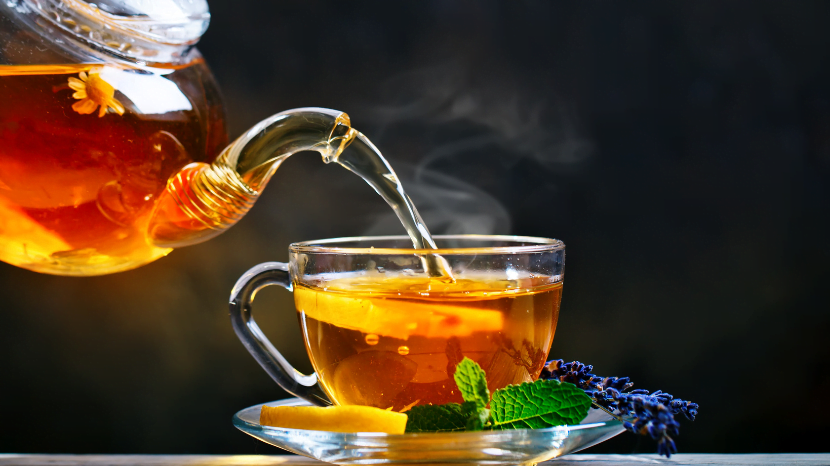
Fact 31: The Nutritional Value of Edible Insects
Edible insects, such as crickets and mealworms, are a sustainable source of protein, vitamins, and minerals. They require less land, water, and feed compared to traditional livestock, making them an eco-friendly alternative for meeting the global demand for protein.
Fact 32: The World’s Largest Fruit
The jackfruit is the largest tree-borne fruit in the world, with some specimens weighing up to 80 pounds (36 kg). Its flesh is sweet and starchy, often used in desserts and savory dishes in Southeast Asian cuisines.
Fact 33: The Colorful World of Carrots
Carrots were not always orange; they were originally purple or yellow. The orange variety that we are familiar with today was developed in the Netherlands as a tribute to the House of Orange, the Dutch royal family, showcasing the fascinating evolution of food cultivation.
Fact 34: The Miracle of Olive Oil
Olive oil, a staple in Mediterranean cuisine, is rich in monounsaturated fats, which can help reduce bad cholesterol levels and inflammation. Its health benefits are numerous, including promoting heart health and aiding in weight management.
Fact 35: The Popularity of Instant Noodles
Instant noodles, invented by Momofuku Ando in 1958, have become a global phenomenon due to their affordability and convenience. They are particularly popular among students and busy professionals, offering a quick and easy meal solution.
Fact 36: The World’s Smelliest Cheese
Vieux Boulogne, a French cheese, holds the title of the world’s smelliest cheese. Its strong odor comes from the beer used to wash the cheese during its fermentation process. Despite its pungent smell, it has a rich and creamy flavor that is cherished by cheese enthusiasts.
Fact 37: The Origins of Coffee
Coffee is believed to have originated in Ethiopia, where the coffee plant, Coffea arabica, is native. According to legend, a goat herder named Kaldi discovered the energizing effects of coffee beans when he noticed his goats becoming more lively after eating the berries from the coffee plant.
Fact 38: The Versatility of Eggs
Eggs are a versatile and nutritious food, rich in protein, vitamins, and minerals. They can be prepared in numerous ways, including boiled, scrambled, and fried, making them a popular choice for breakfast dishes around the world.
Fact 39: The World’s Oldest Brewery
The Weihenstephan Brewery in Bavaria, Germany, is recognized as the world’s oldest continuously operating brewery. It has been brewing beer since 1040, showcasing the long-standing tradition of beer-making in Germany.
Fact 40: The Cultural Significance of Rice
Rice is a staple food for more than half of the world’s population. It holds cultural significance in many societies, often associated with life and fertility, and is a central element in various ceremonies and festivals.
Fact 41: The World’s Most Expensive Mushroom
The white truffle, found mainly in the Langhe and Montferrat areas of Italy, is the world’s most expensive mushroom. Its unique flavor and aroma, coupled with its rarity, make it a highly sought-after delicacy, fetching prices up to $3000 per pound.

Fact 42: The Origins of the Pretzel
The pretzel has a rich history, with origins dating back to the Early Middle Ages. It is believed to have been created by a monk who used the shape to illustrate the Christian Trinity, with the three holes representing the Father, the Son, and the Holy Spirit.
Fact 43: The Nutritional Powerhouse: Spirulina
Spirulina, a type of blue-green algae, is a nutritional powerhouse, packed with protein, vitamins, and minerals. It has been consumed for centuries for its health benefits and is now popular as a supplement and a protein source in vegetarian and vegan diets.
Fact 44: The World’s Largest Chocolate Bar
The world’s largest chocolate bar weighed a staggering 5,792 kg (12,770 lbs) and was created by Thorntons PLC in the UK in 2011. This record-breaking chocolate bar was a celebration of the company’s 100th anniversary.
Fact 45: The Medicinal Properties of Garlic
Garlic, a staple in many cuisines, has been used for its medicinal properties for thousands of years. It contains allicin, a compound with potent antibacterial and anti-inflammatory effects, making it a natural remedy for various health conditions.
Fact 46: The World’s Spiciest Ice Cream
The “Respiro Del Diavolo” (Breath of the Devil) is the world’s spiciest ice cream, available at a shop in Scotland. This ice cream is so spicy that customers have to be 18 years or older and sign a waiver before trying it, showcasing the extremes of culinary experimentation.
Fact 47: The Cultural Significance of Corn
Corn, a staple crop in many countries, has deep cultural significance in Native American societies. It is considered one of the “Three Sisters,” along with beans and squash, representing a system of mutualistic planting that benefits all three crops.
Fact 48: The Origins of Champagne
Champagne, a sparkling wine from the Champagne region of France, has a long history of being associated with royalty and celebrations. Its effervescence comes from a second fermentation process in the bottle, a method developed in the 17th century.
Fact 49: The World’s Rarest Chocolate
The Fortunato No. 4 chocolate is made from the rare Nacional cacao beans found in Peru. These beans were thought to be extinct for nearly a century until they were rediscovered in a remote valley, making this chocolate a rare and prized delicacy.
Fact 50: The Invention of the Sandwich
The sandwich was invented by John Montagu, the 4th Earl of Sandwich, in the 18th century. It is said that he requested his meal to be served between slices of bread to avoid interrupting his gambling game, thus giving birth to the popular food item we know today.

Fact 51: The World’s Oldest Fruit Tree
The Gran Wistaria tree in Sierra Madre, California, is considered the world’s oldest fruit-bearing tree, estimated to be over 500 years old. This tree, with its sprawling vines, produces clusters of purple flowers and is a popular tourist attraction.
Fact 52: The Nutritional Benefits of Seaweed
Seaweed is a nutritional powerhouse, rich in vitamins, minerals, and antioxidants. It is a sustainable food source that has been a part of Asian diets for centuries, offering benefits such as improved digestion and enhanced immune function.
Fact 53: The World’s Largest Pumpkin
The world’s largest pumpkin weighed in at a whopping 2,624.6 pounds (1,190.5 kg), grown by Mathias Willemijns of Belgium in 2016. This record-breaking pumpkin showcases the incredible potential of agricultural feats.
Fact 54: The Origins of Worcestershire Sauce
Worcestershire sauce, a popular condiment, has an interesting origin story. It was created accidentally by two chemists, John Wheeley Lea and William Henry Perrins, when they were attempting to create a fish sauce and left the mixture to ferment for several months, resulting in the sauce we know today.
Fact 55: The Health Benefits of Ginger
Ginger, a root used extensively in Asian cuisine, has numerous health benefits. It contains gingerol, a compound with anti-inflammatory and antioxidant properties, making it a natural remedy for nausea, digestion issues, and even muscle pain.
Fact 56: The World’s Most Expensive Caviar
The world’s most expensive caviar comes from the albino beluga sturgeon, a rare fish found in the Caspian Sea. This caviar, known as “Almas,” is sold in gold-plated tins and can cost up to $25,000 per kilogram, making it a true luxury item.
Fact 57: The Versatility of Tofu
Tofu, made from soybean curds, is a versatile ingredient used in various cuisines. It is a rich source of protein and can be prepared in numerous ways, including stir-frying, grilling, and even blending into smoothies, making it a popular choice for vegetarian and vegan diets.
Fact 58: The World’s Oldest Wine
The world’s oldest known wine was discovered in Georgia, dating back to around 6000 BCE. This discovery showcases the ancient tradition of winemaking in the region, which is still celebrated today with traditional methods of fermentation in clay vessels.
Fact 59: The Cultural Significance of Bread
Bread holds deep cultural significance in many societies, often symbolizing life and prosperity. It is a staple food in various cuisines, showcasing the diversity of culinary traditions and the universal appeal of this humble food item.
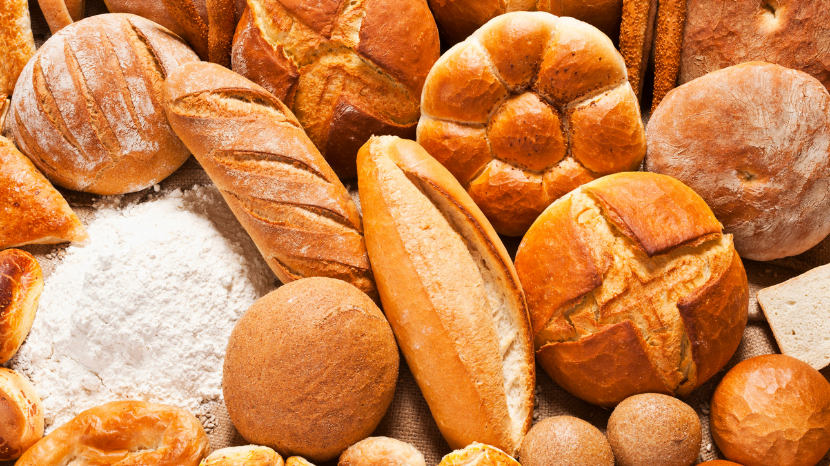
Fact 60: The World’s Oldest Vegetarian Restaurant
The world’s oldest vegetarian restaurant is the Hiltl in Zurich, Switzerland. Established in 1898, it has been serving vegetarian and vegan dishes for over a century, showcasing a long-standing commitment to plant-based cuisine.
Fact 61: The World’s Largest Omelette
The world’s largest omelette was made in Portugal by the Ferreira do Zêzere City Council in 2012. It weighed a staggering 6,466 kg (14,225 lbs) and required 145,000 eggs, 880 lbs of oil, and 220 lbs of butter to make, showcasing the spirit of community and culinary prowess.
Fact 62: The Healing Properties of Honey
Honey, a natural sweetener, has been used for its medicinal properties for centuries. It contains antibacterial and anti-inflammatory properties, making it a natural remedy for wounds and burns. Its soothing effect also makes it a popular home remedy for sore throats and coughs.
Fact 63: The World’s Spiciest Pepper
The Carolina Reaper holds the title of the world’s spiciest pepper, according to the Guinness World Records. This pepper has an average Scoville Heat Unit (SHU) of over 1,641,183, making it a fiery challenge for even the most seasoned spice enthusiasts.
Fact 64: The Origins of the Margherita Pizza
The Margherita pizza, characterized by its simple toppings of tomatoes, mozzarella cheese, and basil, was created in honor of Queen Margherita of Savoy during her visit to Naples in 1889. The colors of the toppings were chosen to represent the Italian flag, showcasing the patriotic spirit of the dish.
Fact 65: The Nutritional Benefits of Kale
Kale, a leafy green vegetable, is a nutritional powerhouse, packed with vitamins, minerals, and antioxidants. It is a rich source of vitamin K, which is essential for bone health and blood clotting, making it a popular choice for health-conscious individuals.
Fact 66: The World’s Most Expensive Watermelon
The world’s most expensive watermelon was sold in Japan for $6,100. This Densuke watermelon, known for its black rind and sweet flesh, was auctioned off in 2008, showcasing the luxury market for rare and unique fruits in Japan.
Fact 67: The Cultural Significance of Sushi
Sushi, a popular Japanese dish, has a rich cultural history. It originated as a method of preserving fish in fermented rice. Over time, it evolved into the artful and diverse culinary tradition we know today, with various types of sushi enjoyed worldwide.
Fact 68: The Health Benefits of Turmeric
Turmeric, a golden spice used extensively in Indian cuisine, has numerous health benefits. It contains curcumin, a compound with potent anti-inflammatory and antioxidant properties, making it a popular natural remedy for various health conditions.
Fact 69: The World’s Largest Cake
The world’s largest cake was created in Kerala, India, in 2020. This cake measured a staggering 6.5 km (4 miles) in length, showcasing the culinary feats that can be achieved with teamwork and dedication.
Fact 70: The Origins of the Caesar Salad
The Caesar salad, a popular dish consisting of romaine lettuce, croutons, and a creamy dressing, was invented by Caesar Cardini, an Italian immigrant in Tijuana, Mexico. It was created as a simple yet flavorful dish during a Fourth of July business rush in 1924.
Fact 71: The Nutritional Value of Lentils
Lentils, a type of legume, are a rich source of protein, fiber, and essential nutrients. They are a staple in various cuisines, offering a versatile and nutritious ingredient for a wide range of dishes, from soups to salads.
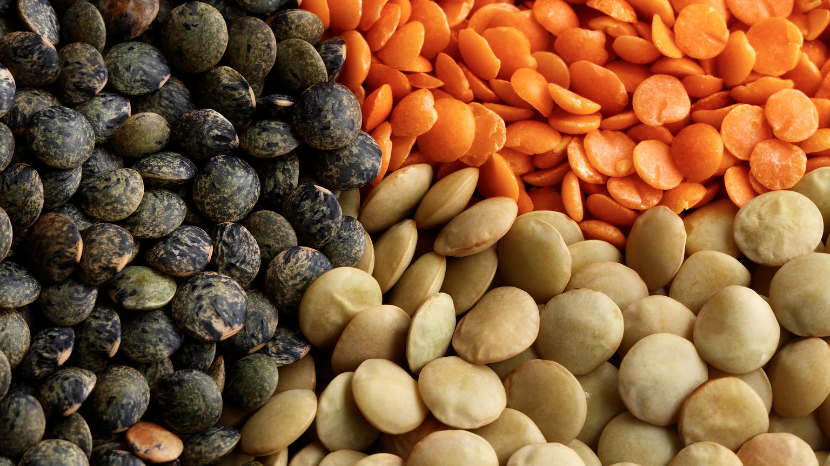
Fact 72: The World’s Oldest Cheese
The world’s oldest cheese was discovered in China, dating back to around 1615 BCE. This cheese, found on the necks and chests of mummies, showcases the ancient tradition of cheese-making and the preservation techniques of the time.
Fact 73: The Cultural Significance of Cornbread
Cornbread, a type of bread made from cornmeal, holds deep cultural significance in Southern American cuisine. It has roots in Native American cooking and became a staple during the Civil War due to its affordability and ease of preparation.
Fact 74: The Health Benefits of Ginger
Ginger, a root used extensively in Asian cuisine, has numerous health benefits. It contains gingerol, a compound with anti-inflammatory and antioxidant properties, making it a natural remedy for nausea, digestion issues, and even muscle pain.
Fact 75: The World’s Largest Sandwich
The world’s largest sandwich was created in Mexico in 2015, weighing a massive 3,178 kg (7,012 lbs). This culinary feat required the collaboration of multiple chefs and volunteers, showcasing the spirit of community and culinary innovation.
Fact 76: The Origins of the Bagel
The bagel, a popular bread product characterized by its ring shape, has origins in the Jewish communities of Poland. It was brought to the United States by Jewish immigrants and became a popular breakfast item, enjoyed with various toppings like cream cheese and smoked salmon.
Fact 77: The Nutritional Benefits of Almonds
Almonds are a rich source of vitamins, minerals, and healthy fats. They are a popular snack choice due to their nutritional profile, offering benefits such as improved heart health and weight management.
Fact 78: The World’s Most Expensive Spice
Saffron, derived from the flower of Crocus sativus, is the world’s most expensive spice by weight. It takes approximately 75,000 saffron blossoms to produce a single pound of saffron spice, contributing to its high price.
Fact 79: The Cultural Significance of Rice
Rice is a staple food for more than half of the world’s population. It holds cultural significance in many societies, often associated with life and fertility, and is a central element in various ceremonies and festivals.
Fact 80: The World’s Smallest Fruit
The world’s smallest fruit is the fruit of the Wolffia globosa, also known as watermeal. This fruit is about the size of a grain of salt, measuring a mere 0.30 mm (0.012 inches) in diameter. Despite its minuscule size, it plays a vital role in aquatic ecosystems, providing nourishment for various water organisms.
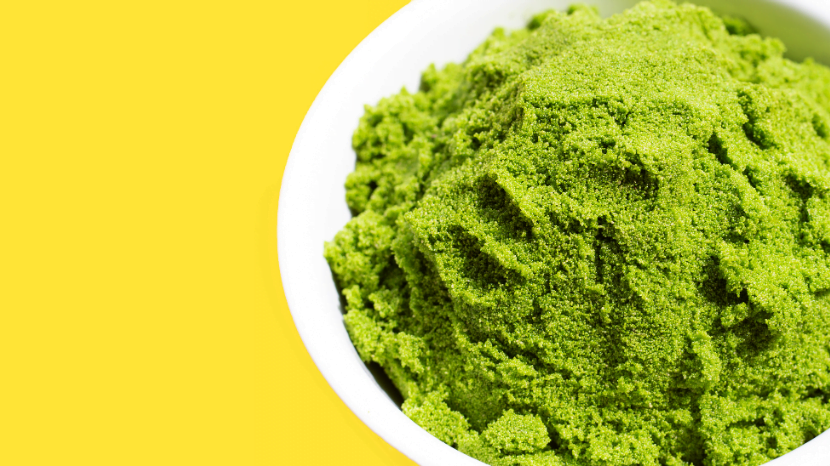
Fact 81: The World’s Largest Cup of Coffee
The world’s largest cup of coffee was brewed in South Korea in 2014, holding a staggering 14,228.1 liters (3,758.7 gallons) of coffee. This record-breaking event was organized by the Caffé Bene in celebration of their 10th anniversary.
Fact 82: The Medicinal Properties of Cinnamon
Cinnamon, a popular spice derived from the bark of the Cinnamomum tree, has been used for its medicinal properties for centuries. It contains cinnamaldehyde, a compound with anti-inflammatory and antioxidant effects, making it a natural remedy for various health conditions.
Fact 83: The World’s Hottest Curry
The world’s hottest curry is the “Curry Hell” served at the Rupali restaurant in Newcastle, UK. This curry is so spicy that diners are required to sign a disclaimer before attempting to eat it, showcasing the extremes of culinary heat.
Fact 84: The Origins of the Croissant
The croissant, a popular pastry known for its flaky layers and buttery flavor, has its origins in Austria. It was inspired by the Austrian “kipferl” and was brought to France by Marie Antoinette, where it evolved into the croissant we know today.
Fact 85: The Nutritional Benefits of Avocado
Avocado is a nutrient-dense fruit packed with healthy fats, vitamins, and minerals. It is a rich source of monounsaturated fats, which can help reduce bad cholesterol levels and promote heart health, making it a popular choice for health-conscious individuals.
Fact 86: The World’s Largest Ice Cream Cake
The world’s largest ice cream cake was created in Canada in 2011, weighing a massive 10,130 kg (22,333.6 lbs). This record-breaking cake was made by Dairy Queen Canada in celebration of their 30th anniversary.
Fact 87: The Cultural Significance of Kimchi
Kimchi, a traditional Korean dish made from fermented vegetables, has deep cultural significance in Korea. It is a staple in Korean cuisine, known for its spicy and tangy flavor, and has been made for centuries using various techniques and ingredients.
Fact 88: The Health Benefits of Green Tea
Green tea, a popular beverage made from the leaves of the Camellia sinensis plant, has numerous health benefits. It is rich in antioxidants, which can help protect your cells from damage and may reduce the risk of developing chronic diseases.
Fact 89: The World’s Largest Sushi Roll
The world’s largest sushi roll was created in Russia in 2011, measuring a staggering 2.844 km (1.767 miles) in length. This culinary feat was achieved by the Sushilka sushi network, showcasing the popularity and versatility of sushi worldwide.
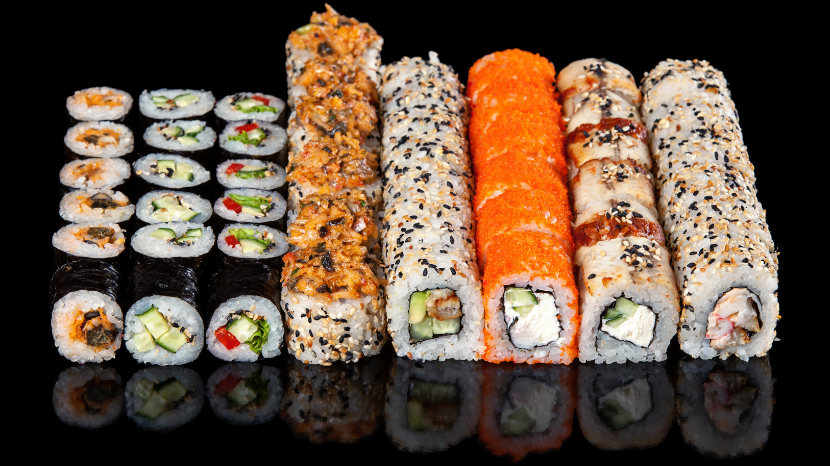
Fact 90: The Origins of the Hamburger
The hamburger, a popular fast-food item, has its origins in Hamburg, Germany. The concept of ground beef patties served as a sandwich was brought to the United States by German immigrants, where it evolved into the hamburger we know today.
Fact 91: The Nutritional Value of Quinoa
Quinoa, a grain crop grown primarily for its edible seeds, is a complete protein, containing all nine essential amino acids. It is also a rich source of fiber, vitamins, and minerals, making it a popular choice for vegetarian and vegan diets.
Fact 92: The World’s Oldest Brewery
The Weihenstephan Brewery in Bavaria, Germany, is recognized as the world’s oldest continuously operating brewery. It has been brewing beer since 1040, showcasing the long-standing tradition of beer-making in Germany.
Fact 93: The Cultural Significance of Pasta
Pasta, a staple in Italian cuisine, has a rich cultural history. It is believed to have been introduced to Italy by Marco Polo, who brought it from China during the 13th century. Since then, it has become a central element in Italian culinary traditions.
Fact 94: The Health Benefits of Dark Chocolate
Dark chocolate, known for its rich flavor and antioxidant properties, has numerous health benefits. It contains flavonoids, which can help improve heart health and may even boost brain function, making it a popular choice for a healthy treat.
Fact 95: The World’s Largest Salad
The world’s largest salad was created in Romania in 2012, weighing a massive 41,998 kg (92,589 lbs). This record-breaking salad was made with a variety of ingredients, including lettuce, cucumbers, and tomatoes, showcasing the spirit of community and culinary collaboration.
Fact 96: The Origins of the Baguette
The baguette, a popular French bread characterized by its long and thin shape, has its origins in the 18th century. It became a staple in French cuisine, enjoyed for its crispy crust and soft interior, and is now enjoyed worldwide.
Fact 97: The Nutritional Benefits of Broccoli
Broccoli is a nutrient-dense vegetable, packed with vitamins, minerals, and antioxidants. It is a rich source of vitamin C and K, and contains sulforaphane, a compound with potential cancer-fighting properties, making it a popular choice for a healthy diet.
Fact 98: The World’s Most Expensive Coffee
The world’s most expensive coffee, Kopi Luwak, is made using a unique process where civets eat the coffee cherries and later excrete the beans. These beans are then collected, cleaned, and processed to make coffee, offering a rare and unique flavor profile.
Fact 99: The Cultural Significance of Tacos
Tacos, a traditional Mexican dish, have deep cultural significance in Mexico. They are a versatile and popular street food, with various fillings and toppings, showcasing the rich culinary traditions of Mexican cuisine.
Fact 100: The Ancient Tradition of Beekeeping
The ancient tradition of beekeeping dates back to at least 4,500 years. Ancient Egyptians were known to keep bees for their honey, which was used as a sweetener, a gift to the gods, and even as an ingredient in embalming fluid, showcasing the versatile uses of honey throughout history.
Conclusion
In this gastronomic journey, we traversed the globe, uncovering the fascinating, sometimes bizarre, and always delightful world of food. From the ancient traditions that shaped our culinary landscape to the modern feats that continue to push the boundaries of what is possible in the kitchen, food remains a central thread in the tapestry of human history. It brings us together, tells our stories, and nourishes not just our bodies, but our souls. As we stand at the intersection of tradition and innovation, one can only wonder what the future holds for the world of food. One thing is for certain: the culinary world will continue to surprise, delight, and unite us in the most unexpected ways.

